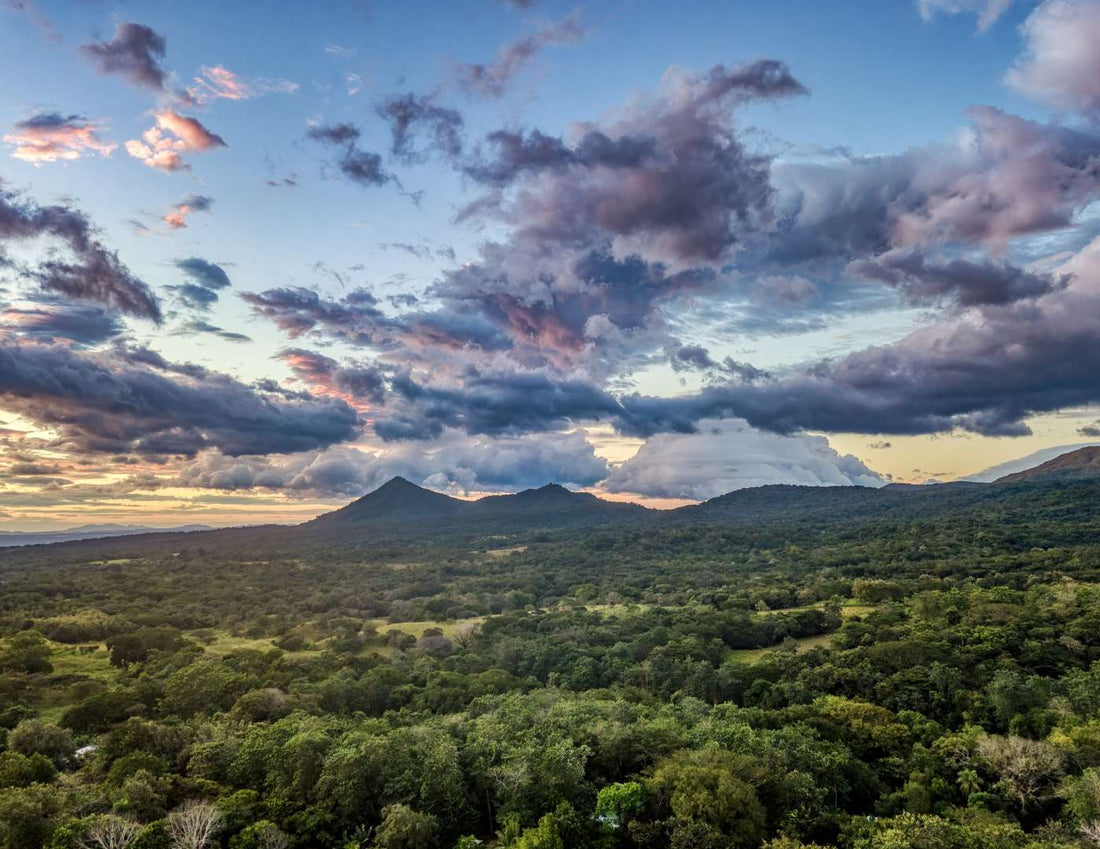
Rincón de la Vieja Volcano National Park
BY NAMUBAKShare
Located in the province of Guanacaste, Rincón de la Vieja National Park is a spectacle of biodiversity and volcanic energy. From dry forests to cloud forests, to hot springs, hidden waterfalls, and trails that traverse lands formed by the fury of magma, this park offers a unique experience in Costa Rica. Thirty-two rivers originate here, and one of the most important wild populations of the guaria morada , the country's national flower, is protected.
History of Rincón de la Vieja Park
Created in 1973 by Law No. 5398, this park covers more than 14,300 hectares and is divided into two tourist sectors: Las Pailas and Santa María . Its ecological and geological value make it a natural gem. In addition to its biodiversity, it is home to the Rincón de la Vieja massif, with nine craters and an active volcano whose activity has shaped the landscape for millennia.
Why is it called Rincón de la Vieja?
The name "Rincón de la Vieja" comes from an ancient Chorotega legend. According to tradition, a healer lived on the slopes of the volcano after losing her great love at the hands of her own father, who threw him into the crater. Heartbroken, she retreated to the mountain, where she lived in solitude and developed a profound knowledge of medicinal plants. It was said that those who climbed her "rincón" seeking healing returned cured. Thus, the mountain became known as the "rincón de la vieja" (the wise old woman's corner).
Today, that history is intertwined with the park's natural mysticism, transforming every trail and every steam from the cauldrons into a living echo of the legend. More than just a name, it represents the ancestral connection between nature, history, and healing.
Ecosystems, fauna and flora
Rincón de la Vieja allows you to cross multiple life zones in just a few hours: from tropical dry forest to cloud forest. Along the way, it's common to see:
- Mammals : coatis, deer, howler monkeys, pumas and it is also home to the Jaguar.
- Birds : toucans, orioles, hawks and bellbirds.
- Reptiles and amphibians : green iguanas, snakes and tree frogs.
- Notable flora : purple guaria, ceibas, tree ferns and lichens.
Also noteworthy are its geothermal phenomena: mud pots, fumaroles, steam vents and volcanic lagoons.
Discover: The jaguar in Costa Rica to learn more about one of the six felines that inhabit the country.

Rincón de la Vieja National Park Trails
Las Pailas Trail (3 km – low difficulty)
This is the park's most popular route. It's a circular route, well-marked, and offers accessible sections. Here, visitors witness volcanic activity firsthand: boiling mud, fumaroles, hot lakes, and the famous "little volcano." Ideal for a two-hour hike through dry and humid forest.
Tip: Here also begins the path to the Santa María sector and its hot springs (7 km).
Waterfalls Trail (up to 10 km – medium/high difficulty)
Part of the Visitor Center and offers access to two waterfalls:
- La Cangreja (5 km): known for its turquoise blue hue.
- Hidden Waterfall (4.3 km): a more demanding route with a greater gradient.
Both offer an immersive tour through hillsides and dense forests.
Is bathing in the falls allowed?
Swimming is not permitted at these two waterfalls for safety reasons. However, in the Santa María area , especially in the natural pools and hot springs , you can enjoy the water responsibly.

Active Crater Trail (temporarily closed)
This challenging 8 km (16 km round trip) hike ascends to the volcano's main crater. The trail involves an ascent of over 1,000 meters in altitude, traversing extreme weather conditions. It is currently closed due to volcanic activity, but during safe weather, it offers spectacular views of the crater and its surroundings.
Services, schedules and rates
Hours : Tuesday to Sunday, 8:00 am to 3:00 pm (closed Mondays).
Rates :
- Nationals: ¢1,130 adults / ¢565 children
- Foreigners: $16.95 adults / $5.65 children
Sectors :
- Las Pailas : visitor center, drinking water, restrooms. No camping.
- Santa María : camping area (currently closed), showers, restrooms, information booth.
Climate and best time to visit
Rincón de la Vieja National Park is located in a climatic transition zone, so you'll experience everything from the dry heat of the tropical forest to the humidity of the cloud forest.
The dry season , from December to April, is ideal for hiking the trails, especially the longer ones like La Cangreja or Las Pailas. During the rainy months (May to November), morning hikes are recommended, as afternoons often bring precipitation.

When is the best time to visit Rincón de la Vieja National Park?
The dry season offers the best weather conditions, with clearer skies, less mud on the trails, and greater visibility for wildlife spotting.
One volcano, nine craters and a lot of energy
One of the park's main attractions is the Rincón de la Vieja volcanic massif, home to nine craters , the most famous of which is the Active Crater. Although it's currently closed due to volcanic activity, its energy is evident on trails like Las Pailas , where you can see boiling mud pots, fumaroles, and rivers of hot springs that spring from the bowels of the Earth.
What volcano does Rincón de la Vieja National Park have?
The park protects the Rincón de la Vieja massif, a volcanic complex that includes nine craters, the most emblematic of which is the Active Crater.

Rincón de la Vieja Volcano: A living jewel among volcanoes and forests
Rincón de la Vieja National Park is a destination that encapsulates the geological and biological essence of Costa Rica. Here, fire and water coexist: while the volcano transforms the land, rivers give life to hundreds of species. Visiting this park is like experiencing the power of nature firsthand. And by hiking its trails, you not only explore unique landscapes but also support their conservation.


